Grab your binoculars and have a look!
Host: Kilcowera Station
Written by Toni Sherwin, Station Owner
Kilcowera is a working cattle station that offers accommodation, camping and guided tours.
Way back in 2001 we opened up Kilcowera to paying guests, since then we have had thousands of them through the gates. It was a fairly easy decision to make as we had very nice Shearers Quarters accommodation which was not being used as we had gone out of sheep some time before. We decided to run only cattle as the costs of wool production were skyrocketing and wool prices were abysmal at the time. So we now have tourists and cattle and it’s proven to be a good mix. We have 2 camping areas and our accommodation. Guests can do self drive tours around the property or be taken on a guided tour. We can cater for groups large and small and visitors can drive or fly into the station.
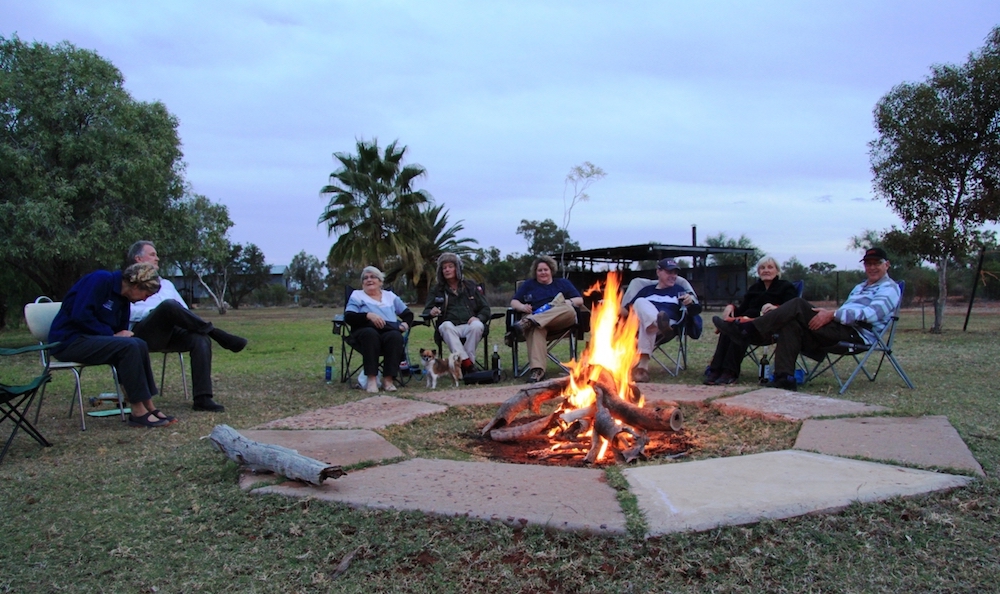
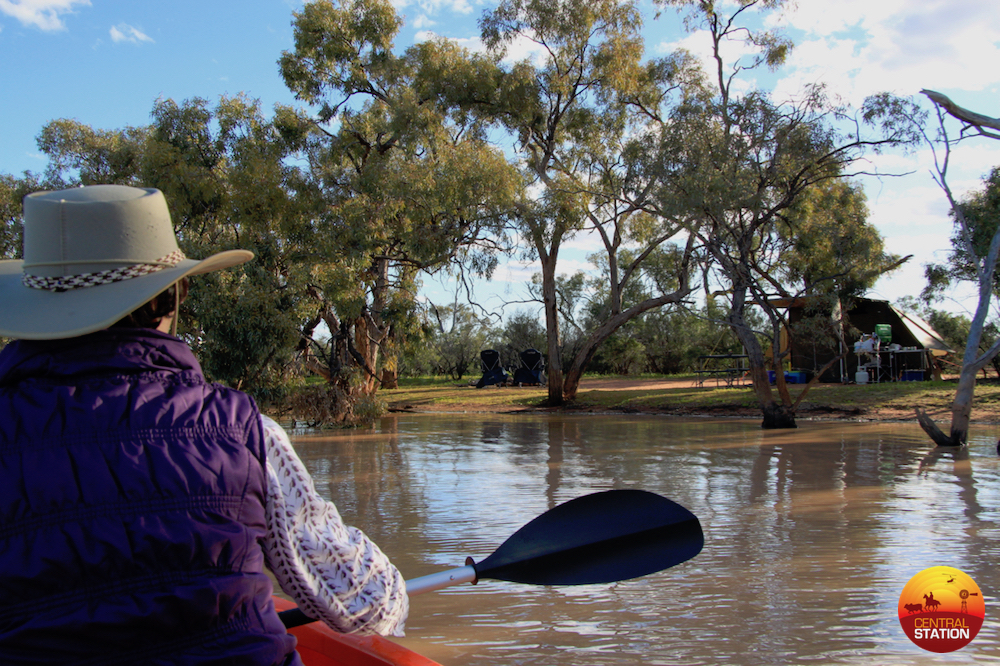
Our visitors are a very diverse bunch of people! We get 4 wheel drive groups and clubs, families, photographers, birdwatchers, naturalists, caravanners, people on motor bikes and even tractors, one bloke even drove his road train in to spend the night. The birdwatchers are always interesting people – they often come from some sort of scientific background – so we can learn stuff from them and we can help to develop their knowledge of the outbacks’ biodiversity. Kilcowera is a bird-watchers’ paradise with over 180 species found on the property. We see our foray into tourism as a great way to educate people about a different way of life far from the comforts of their city lifestyles. We can help dispel many untruths that some city people believe. But back to the birds!
We were pretty busy last year with our visitors and amongst them we have had a lot of photographers. One of these was Nevil who did an outback trip with a couple of other blokes and I believe they had a ball. They were certainly a happy crew with a job for everyone – there was the navigator, the cook and the bloke who wandered around with the camera.
Nevil was lucky enough to get a whole sequence of images of this bird having it’s little snack – right down to the last leg going down the hatch. The Hobbies have a nest right near our Shearers Quarters accommodation and campground.
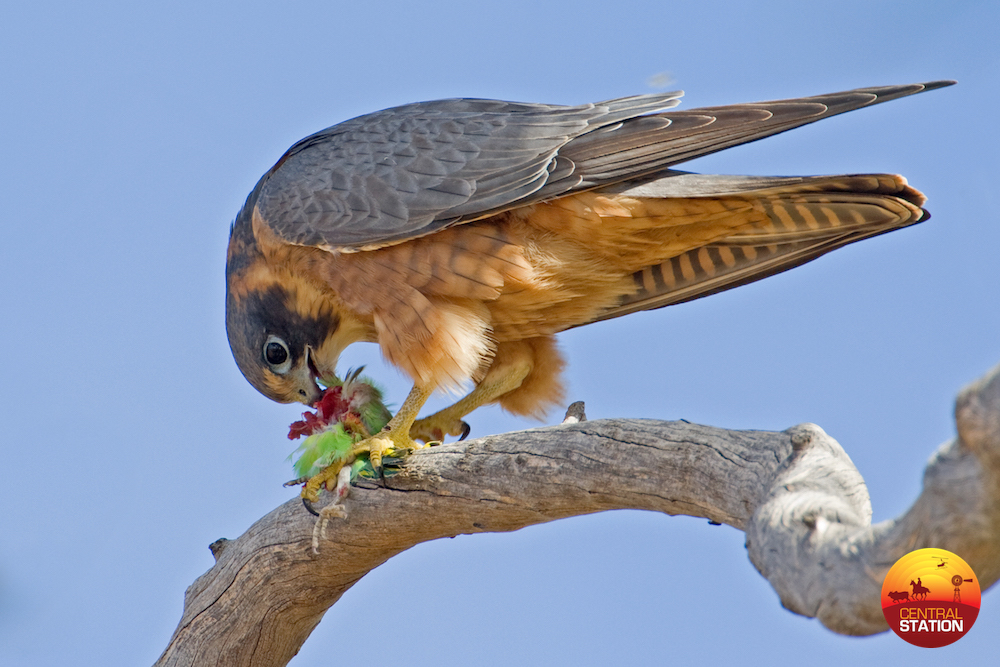 Hobby Falcon.
Hobby Falcon.
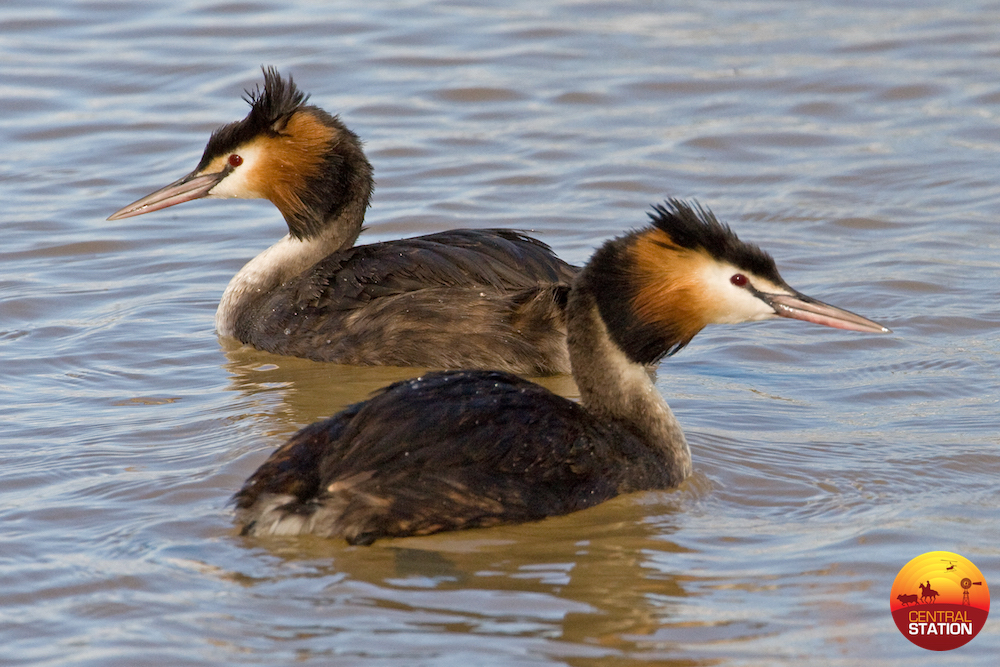 Great Crested Grebes.
Great Crested Grebes.
These Great Crested Grebes are just gorgeous! This was taken in Benanga Creek which is one of the creeks that start on Kilcowera and fill the saline Lake Wyara. Access to the western side of Lake Wyara is through Kilcowera.
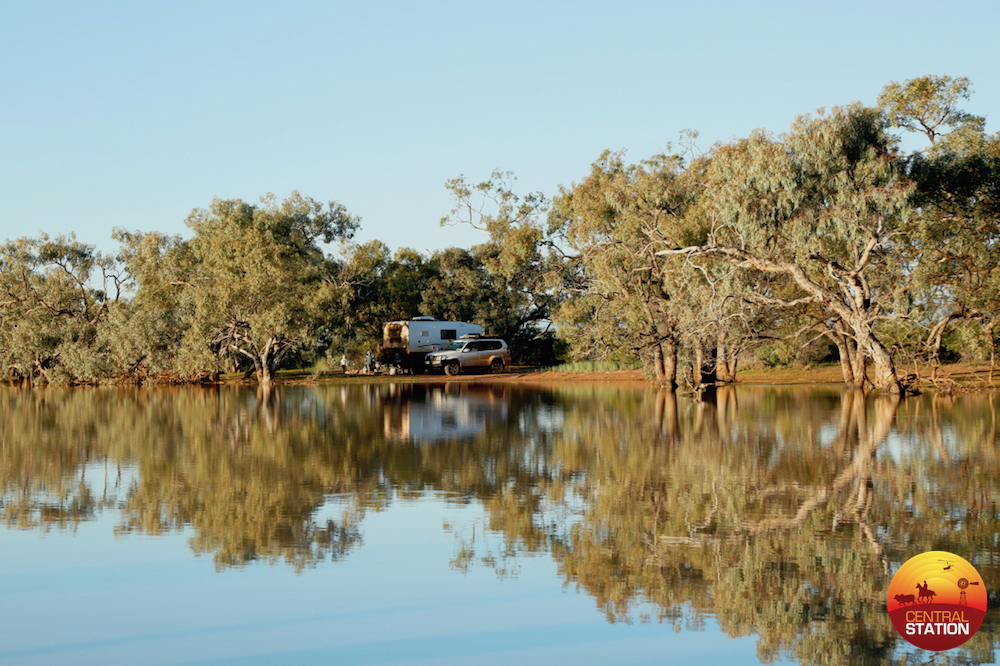
Cardenyabba Lagoon looks spectacular when full and is home to stacks of these Plumed Whistling Ducks, lots of Shags, Darters, Cormorants and Pelicans to name just a few. Visitors are able to bush camp right on the side of the lagoon and witness all these birds doing their thing. And that seems to be eating all the yabbies and fish in the lagoon! This stunning Red Backed Kingfisher is another resident around the lagoon. Isn’t he a dork?
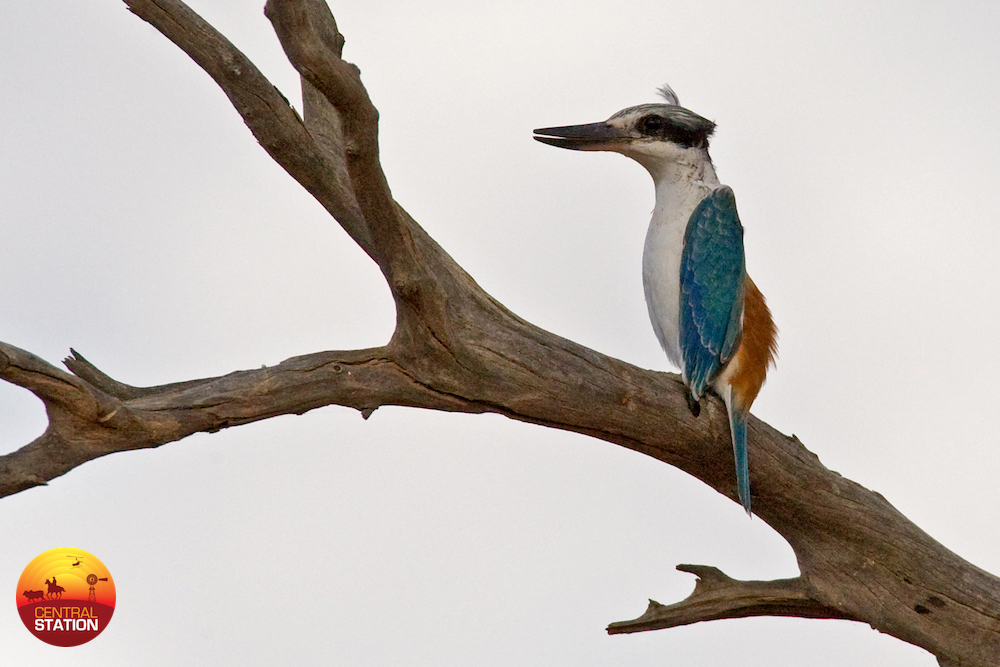 Red Backed Kingfisher.
Red Backed Kingfisher.
And there are always a few sticky beaks to keep an eye on the goings on in the bush.
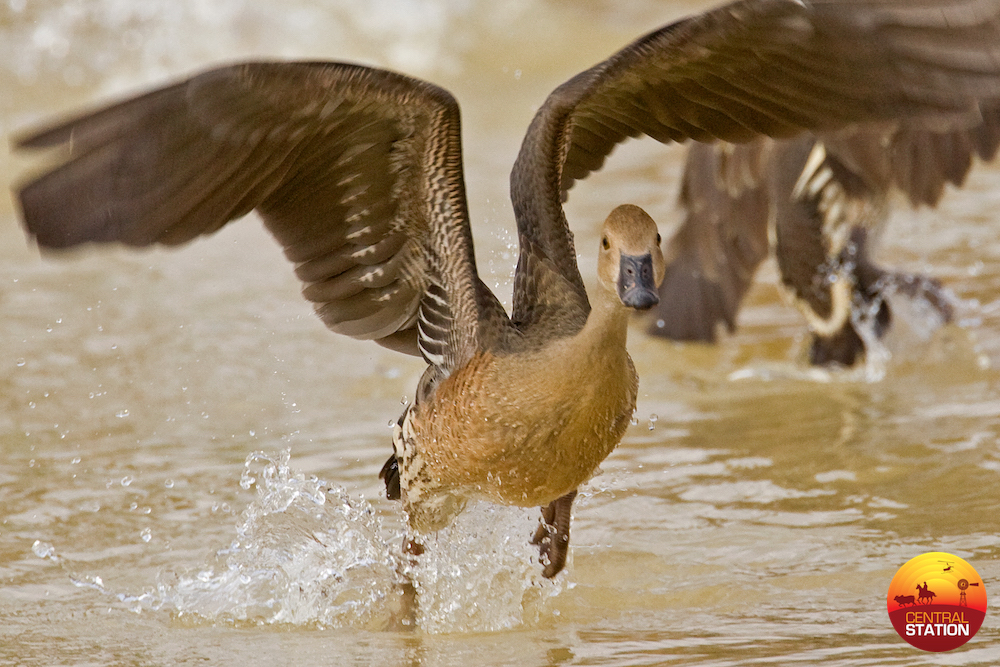 Plumed Whistling Duck.
Plumed Whistling Duck.
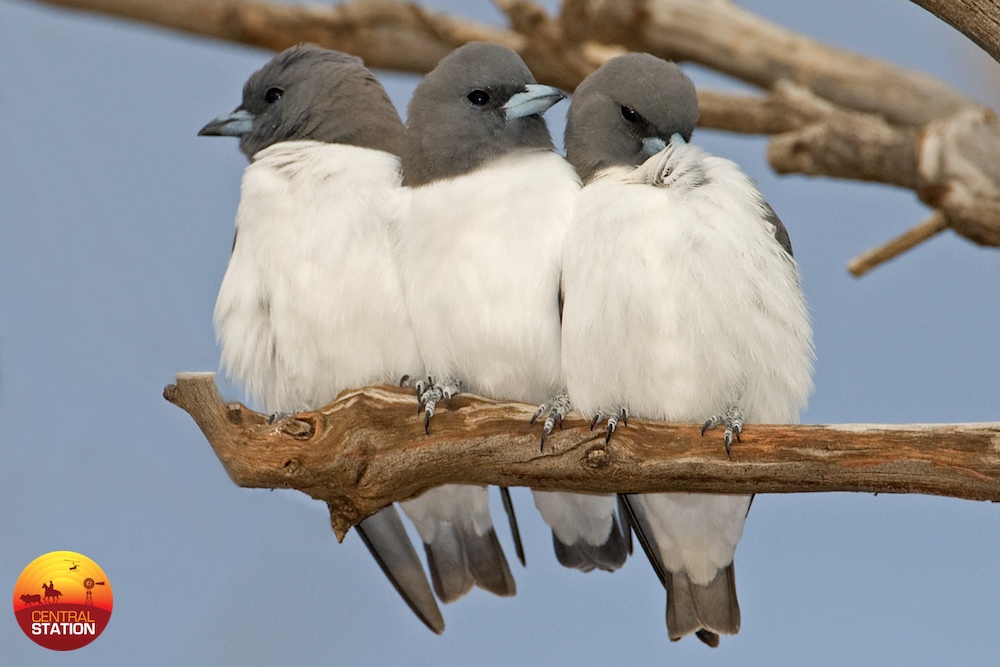 White-breasted Woodswallows.
White-breasted Woodswallows.
Kilcoweras’ eastern boundary is shared with Currawinya National Park. Our guests have exclusive access to the western side of the 3000 hectare, saline, Lake Wyara. Our challenging sixty kilometre scenic drive takes you to such attractions as: Murderer’s Bore, the scene of the grisly 1940’s murder, Rustlers Roost, Red Hole, Lake Wyara and Cardenyabba Lagoon. Explore the many gorges, small caves, creeks and waterholes that you will find on your way. Do a little bird watching and wildlife spotting while having lunch or smoko by a peaceful waterhole.
Remember you have the option of self guided tours on our well sign posted tracks or a guided tour with Greg or Toni in a station vehicle. Guided tours range from a few hours to most of the day and can be tailored specifically to our guests needs and interests. A high clearance vehicle is needed for some, but not all of the station tracks.
There are also other shorter drives that take you to different areas of the property and all are signposted and marked on the mud map that you will be given on arrival. With the many different land and eco systems found on Kilcowera visitors will discover a stunning range of wildflowers after suitable rainfall and a diversity of shrubs and trees unique to the Mulga Rangelands. Many of these have been identified and signage added to them for the visitors enjoyment.
Visitors have the opportunity to view the many different ecosystems within our boundaries and to learn about our unique flora and fauna. Many of the outbacks’ other iconic animals are also easily seen where ever you look, including red kangaroos and eastern greys, emus, lizards and echidnas.
The vegetation is equally diverse, many of the shrubs and trees have been identified and signage attached to them so visitors can gain an appreciation of the many different varieties growing in the outback.
Yabbying, canoeing and swimming in the lagoon, dams or waterholes is a popular activity in the right season.
Take the opportunity to brush up on your photography skills or go birdwatching, bushwalking or cycling, try some camp oven cooking and maybe watch some seasonal station activities during your stay. It’s hard to beat relaxing by your private campfire and watching the outback night sky.
Kilcowera is ideally situated for day trips to the nearby village of Hungerford, Currawinya National Park and Thargomindah, the headquarters of the Bulloo Shire. Other nearby attractions include Bindegolly NP, opal mines at Yowah and Black Gate and the villages of Eulo, Toompine and Noccundra.
